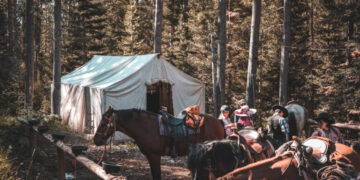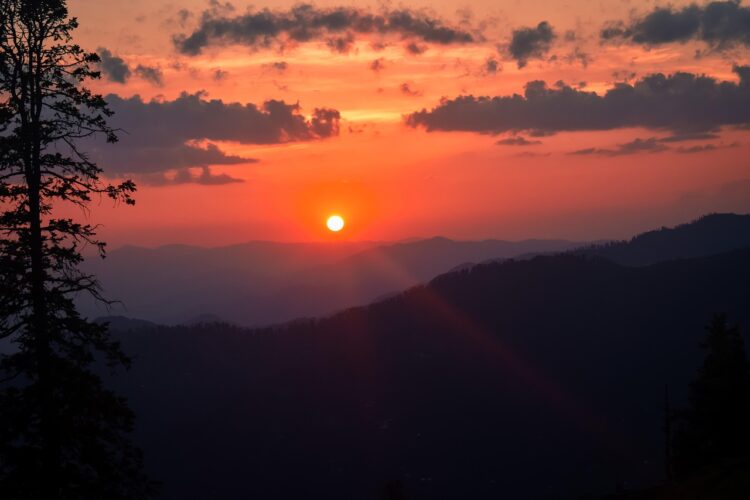Introduction to Trekking in Ladakh
Trekking in Ladakh is not just a physical journey—it’s an experience that blends stark landscapes, ancient monasteries, high-altitude passes, and untouched mountain villages. Nestled between the Himalayas and the Karakoram ranges, Ladakh offers some of the most remote and soul-stirring trekking routes in India. Whether you’re a seasoned trekker or a curious traveler, this land of high passes calls for attention with its unfiltered beauty and silence of the mountains.
Why Ladakh is a Unique Trekking Destination
Ladakh’s high-altitude desert terrain is unlike any other trekking destination. The treks take you across moonscapes, glacial streams, arid plateaus, and deep valleys. What sets trekking in Ladakh apart is the rawness of nature—no forests, no crowds, just wide open skies and towering peaks. Add to this the presence of ancient Tibetan Buddhist culture, and each trail turns into a living museum of spirituality, resilience, and tradition.
Unlike the lush treks of the Western Himalayas, Ladakh’s trails are defined by their barren elegance and otherworldly charm. The combination of altitude, remoteness, and culture makes it a destination for those seeking real, grounded adventure.
Best Time for Trekking in Ladakh
Timing is everything when planning a trek in Ladakh. The region remains cut off by road for much of the year due to heavy snowfall. The ideal window is between mid-June and mid-September. During this time, the skies remain clear, and the temperatures are relatively stable. Even in peak summer, nights can be cold at higher altitudes, so trekkers must be prepared for sharp drops in temperature.
If you’re considering winter treks like the Chadar Trek, January and February are the months to plan. But these treks demand serious preparation, acclimatization, and physical endurance.
Top Routes for Trekking in Ladakh
Markha Valley Trek
One of the most popular and accessible treks in Ladakh, the Markha Valley Trek offers a perfect blend of landscapes and culture. The trail passes through villages like Hankar and Markha, where trekkers get to stay in local homes, offering insight into Ladakhi life.
- Duration: 6–9 days
- Altitude: Up to 5,200 meters at Kongmaru La
- Highlight: Views of Kang Yatse and Hemis Monastery
Chadar Trek
Trekking in Ladakh reaches its most extreme form with the Chadar Trek, where you walk over the frozen Zanskar River. It’s not just a trek but a survival experience through sub-zero conditions.
- Duration: 9–10 days
- Altitude: Approx. 3,400 meters
- Highlight: Frozen waterfalls and narrow gorges
Stok Kangri Trek (Now Closed for Conservation)
Though currently closed for ecological recovery, the Stok Kangri Trek was once the highest trekking summit in India. At 6,153 meters, it was ideal for experienced trekkers looking to touch a Himalayan summit without technical climbing.
- Duration: 5–7 days
- Altitude: 6,153 meters
- Highlight: Panoramic views of the Zanskar and Indus Valley
Lamayuru to Alchi Trek
This route connects two ancient monasteries and is less crowded. It passes through remote villages and arid landscapes, offering a deep dive into Ladakh’s monastic traditions.
- Duration: 5–6 days
- Altitude: Up to 4,500 meters
- Highlight: Cave monasteries, silent valleys, and historical sites
Challenges of Trekking in Ladakh
Trekking in Ladakh is not for the faint-hearted. The primary challenge is altitude. Most treks start above 3,000 meters, and altitude sickness can affect even the fittest travelers. It’s essential to spend 2–3 days in Leh for acclimatization before starting any trek.
Weather is another unpredictable factor. Sudden snowfalls, strong winds, or drastic temperature drops can change trail conditions quickly. Staying well-equipped and keeping a flexible schedule helps manage such unpredictabilities.
Remote trails often mean limited access to supplies, emergency services, or even mobile networks. This is why planning and going with local guides or trekking groups is highly advisable.
Cultural Experience Along the Trails
Every trail in Ladakh winds through villages that hold centuries-old traditions. From whitewashed stupas and mani walls to locals in traditional Gonchas, trekking in Ladakh offers more than just nature—it offers time travel.
Home-stays are often a part of longer treks, where trekkers share food and stories with Ladakhi families. You’ll witness ancient Tibetan rituals, simple mountain lifestyles, and a culture deeply rooted in respect for nature. This cultural immersion is not an add-on—it’s part of the journey.
Essential Gear Checklist
Trekking in Ladakh requires specialized gear due to altitude and terrain. Here’s what should be in every trekker’s backpack:
- High-ankle trekking boots
- Multiple layers (including thermals, fleece, and windproof jackets)
- Sleeping bag (rated for -10°C or lower)
- Trekking poles
- Sunscreen and sunglasses (UV protection is critical at high altitude)
- Water purification tablets
- First aid kit with Diamox for altitude sickness
- Dry fruits, energy bars, ORS packets
It’s also important to carry reusable water bottles and avoid single-use plastics. Ladakh’s fragile environment needs careful handling.
Acclimatization and Health Tips
Altitude sickness, also known as Acute Mountain Sickness (AMS), is a real risk. Signs include headache, nausea, dizziness, and fatigue. To prevent AMS during trekking in Ladakh:
- Rest at least 48 hours in Leh before heading to higher altitudes.
- Drink at least 3–4 liters of water daily.
- Avoid alcohol and smoking.
- Ascend slowly and never gain more than 500–600 meters of altitude in a day.
- Listen to your body—if symptoms worsen, descend immediately.
Carrying a portable oxygen cylinder is advisable for treks above 4,500 meters.
Local Trekking Guidelines and Sustainability
Ladakh has started taking steps toward sustainable tourism, especially as trekking becomes more popular. Trekkers are encouraged to follow Leave No Trace principles:
- Do not litter, especially plastic and non-biodegradable waste
- Use local homestays and services to support communities
- Avoid over-tourism spots during peak season
- Stick to marked trails to prevent erosion and habitat disturbance
Several treks also require Inner Line Permits—especially those near borders. These can be arranged in Leh and should be kept handy during your trek.
Budget and Planning Tips
While trekking in Ladakh can be done on a range of budgets, the region is more expensive than other Himalayan areas due to remoteness. A typical guided trek, including meals, stays, transport, and gear, may range between INR 15,000 to INR 50,000 or more depending on the route and duration.
Tips for smart planning:
- Book in advance for popular routes
- Travel in small groups to minimize environmental impact
- Rent gear in Leh instead of buying everything
- Choose local guides who know the terrain and culture
- Travel insurance with high-altitude coverage is strongly recommended
Photography and Nature Observation
For photographers, trekking in Ladakh is a visual treasure. From surreal sunrise shadows over the Stok range to yaks crossing frozen rivers, every step offers a postcard. Wildlife lovers may spot the Himalayan marmot, blue sheep, or even a rare snow leopard in winter treks.
But remember: photography in monasteries or sacred sites should be done with respect. Always ask before clicking pictures of local people, especially in remote villages.
Conclusion: A Path That Stays With You
Trekking in Ladakh is more than a journey through landscapes—it’s a deeper connection with nature, simplicity, and self. The quiet passes, the welcoming smiles in remote villages, and the sheer magnitude of the mountains stay with you long after the trek ends.
This is not a destination that can be rushed or ticked off a list. Each trek is a reminder of how small we are in front of nature—and how fulfilling it is to move slowly, breathe deeply, and just walk.


















